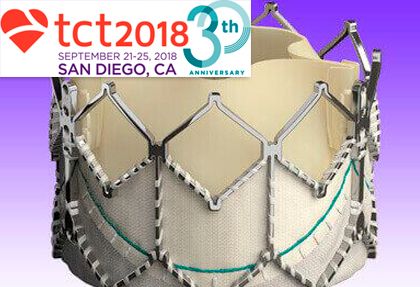The 1-year follow-up for this study was published last year in JACC, and it showed that transcatheter aortic valve replacement (TAVR) in failed bioprosthetic valves has low rates of complications, boosts significant hemodynamic improvement, and results in relatively low mortality. Now, the 3-year results are presented at TCT 2018.
 The study followed 365 patients who underwent valve-in-valve treatment with a Sapien XT failed bioprosthetic valve of less than 21 mm, with ejection fraction less than 20%, and an estimated life expectancy of less than 2 years. The average age of patients was 79 years, the mean Society of Thoracic Surgery (STS) predicted risk of mortality score was 9.1%, and more than 90% of patients had New York Heart Association (NYHA) class III/IV symptoms.
The study followed 365 patients who underwent valve-in-valve treatment with a Sapien XT failed bioprosthetic valve of less than 21 mm, with ejection fraction less than 20%, and an estimated life expectancy of less than 2 years. The average age of patients was 79 years, the mean Society of Thoracic Surgery (STS) predicted risk of mortality score was 9.1%, and more than 90% of patients had New York Heart Association (NYHA) class III/IV symptoms.
Reported mortality at 1 year was 12.1% and at 3 years, 32.7%.
The majority of patients were treated with a 23-mm valve, thus generating a 1.2-cm2 mean valve area and a 17.7-mmHg mean gradient after the procedure. These results were maintained throughout 3 years.
Read also: TCT 2018 | TALENT: Ultrathin Struts and Bioresorbable Polymer at the Lowest Possible Cost.
At 3 years, 86% of patients had NYHA class I/II heart symptoms and sustained improvement in quality-of-life scores.
Original title: Late Follow-Up After Treatment of Failing Surgical Aortic Bioprosthetic Valves with a Balloon-Expandable Transcatheter Heart Valve.
Presenter: John G. Webb.
Get the latest scientific articles on interventional cardiologySubscribe to our weekly newsletter
We are interested in your opinion. Please, leave your comments, thoughts, questions, etc., below. They will be most welcome.





